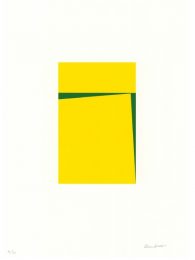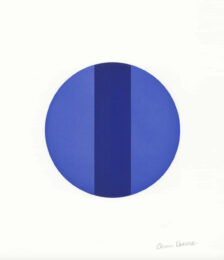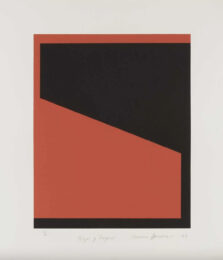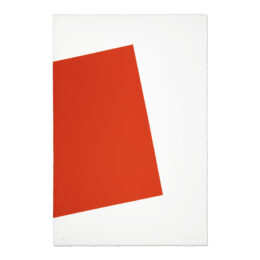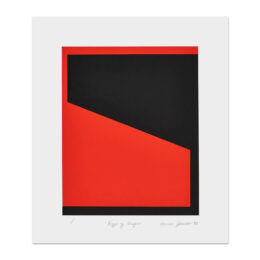Details — Click to read
Carmen Herrera is finally receiving long-deserved recognition for her arresting, hard-edge geometric compositions. Born in Havana in 1915, Herrera spent much of the 1930s and 1940s between Paris and Cuba before settling permanently in New York in 1954. Herrera was formally trained as an architect at the Universidad de la Habana and later studied at the Art Students League in New York from 1943 to 1945. She received recognition for her artistic accomplishments in post-war Paris, exhibiting alongside Theo van Doesburg, Max Bill and Piet Mondrian, but was long overlooked upon her return to the male-dominated New York art world. Despite breaking ground simultaneously with her peers, Barnett Newman and Leon Polk Smith, Herrera was often sidelined as a woman and a Latin American artist.
Herrera’s work is chiefly concerned with formal simplicity and experimentation with bold color. Through the use of sharp lines and stark color contrasts, she creates dynamic and technically sophisticated compositions that reflect movement, balance and symmetry.








